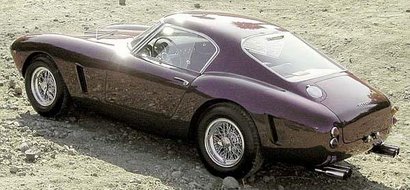Today, the subject is the thermostat
The thermostats fitted to Fulvias (and Flavias and 2000s) are in my experience very long-lasting. This of course is a good thing, but of course, does not mean that they do not get “tired” and start to misbehave.
I have had a few experiences but only a few and of course, over 25 years.
First, they sometimes stick – either partly open so that the engine is reluctant to warm up, or shut so that it overheats. These problems can be spotted easily provided one keeps an eye on the most important gauge on the dash, namely the water temperature gauge (well at least before speed cameras and police radars started to appear!).
Not long ago, I came across a slightly strange case. The engine in question had not been run for a few months. All had been fine the last time it had been run, but on firing up, the engine very quickly got hot whilst the cooling fan failed to start. I found that there seemed to be little circulation of water: the radiator was mostly cool. I was inclined to suspect the water pump, since such symptoms are often found with pump trouble.
However I decided to have a look at the thermostat. On removal of the top hose I quickly saw the problem. The little metal strap that locates the central element of the thermostat had snapped, causing the unit to stay firmly closed.
As is often the case with old cars, diagnosis is one thing, rectification quite another.
I had a new thermostat, but the big problem is removing the old one. After countless years screwed into the end of the aluminium water pipe it was as usual, thoroughly corroded. From experience I know that in such cases, penetrating fluid is usually not much use – unless of course one is prepared to wait for weeks. The aluminium water pipes are often corroded too and apt to become weak, and of course a good thread is necessary to take the new thermostat.
The solution was fairly simple. Whilst bearing in mind that the thermostat is quite close to the carburettors, the trick is to heat up the pipe around the thermostat with a blowlamp; a normal gas blowlamp such as is used by plumbers is fine for the job. Use a heat shield, say a piece of aluminium sheet, if you are concerned about the carbs. Afterwards, with a Stillson wrench or a large pair of selfgrips it should be possible to unscrew the thermostat. You will see that the thread looks horrible: full of white powder. Give this a thorough wire-brushing, check for cracks which are quite common, apply “Copaslip” (i.e. copper-loaded grease) and fit the new thermostat – it does not have to be super-tight (just in case).
I shall offer some thoughts about water pumps some time soon.



 To start you off, how about the mouthwatering pic I have attached? Yes it's the engine compartment of arguably the most famous Fulvia of them all: Sandro Munari's "No 14" that won the Monte-Carlo Rally in 1972, helping Lancia to their first World Rally Championship.
To start you off, how about the mouthwatering pic I have attached? Yes it's the engine compartment of arguably the most famous Fulvia of them all: Sandro Munari's "No 14" that won the Monte-Carlo Rally in 1972, helping Lancia to their first World Rally Championship.











